bitforms gallery
Curated Catalog
Created by: bitforms gallery
Founded in 2001, bitforms gallery represents established, mid-career, and emerging artists critically engaged with new technologies. Spanning the rich history of media art through its current developments, the gallery’s program offers an incisive perspective on the fields of digital, internet, time-based, and new media art forms. Supporting and advocating for the collection of ephemeral, time-based, and digital art works since its founding, bitforms gallery artists are in the collections of the Museum of Modern Art, New York; Tate Modern, London; the Solomon R. Guggenheim Museum, New York; the Smithsonian American Art Museum, Washington, D.C.; the National Portrait Gallery, Washington, D.C.; Center for Art and Media (ZKM), Karlsruhe; Centre Pompidou, Paris; Victoria and Albert Museum, London; Stedelijk Museum, Amsterdam; and Borusan Contemporary, Istanbul, among other institutions internationally.
Contact Art Advisor
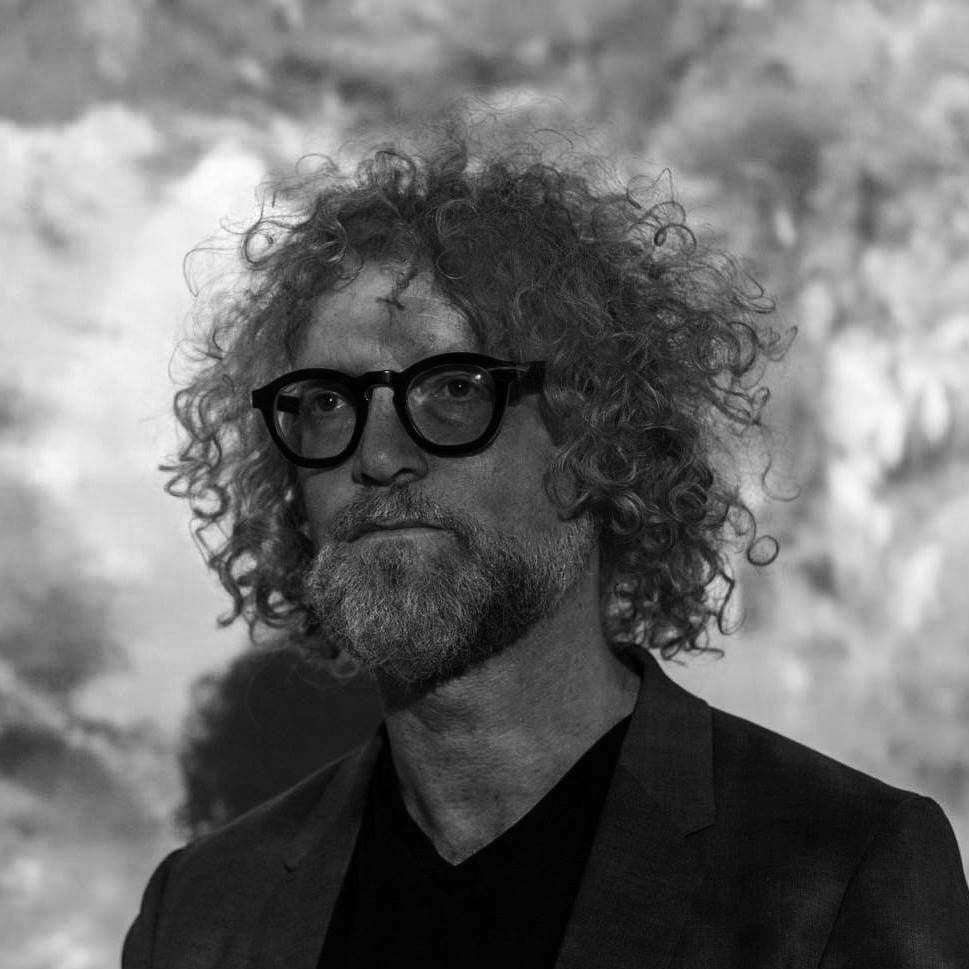
Steven Sacks
Founder/Director bitforms gallery
Steven Sacks is the founder and director of bitforms gallery, considered one of the leading galleries in the world focusing on new media. Founded in 2001, the gallery represents established, mid-career, and emerging artists critically engaged with new technologies. Spanning the rich history of media art through its current developments, the gallery’s program offers an incisive perspective on the fields of digital, internet, time-based, and new media art forms. Supporting and advocating for the collection of ephemeral, time-based, and digital art works since its founding, bitforms gallery artists are in the collections of the Museum of Modern Art, New York; Tate Modern, London; the Solomon R. Guggenheim Museum, New York; the Smithsonian American Art Museum, Washington, D.C.; the National Portrait Gallery, Washington, D.C.; Center for Art and Media (ZKM), Karlsruhe; Centre Pompidou, Paris; Victoria and Albert Museum, London; Stedelijk Museum, Amsterdam; and Borusan Contemporary, Istanbul, among other institutions internationally.
Jonathan Monaghan
Motherhship
Jonathan Monaghan creates sculpture and animated video installations that challenge the boundaries between the real, the imagined, and virtual. The video “Mothership” appropriates characters and objects from science fiction, advertising, video games and art history. Funny and colorful, Monaghan’s work travels a space between Super Mario’s Rainbow Road, the landscape of German romantic painting, and the Technodrome in Teenage Mutant Ninja Turtles. Absurdly pulling together disparate populist imagery that evokes value, power and technology, it fuses luxury apartments and medical operating rooms, as well as the London skyline and a sacred cow.
Jonathan Monaghan
Out of the Abyss
Out of the Abyss subversively combines imagery from modern consumerism with biblical symbols and narratives associated with the Apocalypse. Visually extravagant, the work re-imagines elements such as the seven-eyed lamb and the four horsemen as terrifying beasts of the present day, adorned with security cameras, riot gear, and consumer electronics. Inverting ancient symbols having to do with the end times, the work alludes to modern society’s unsustainable and fraught relationship between technology and materialism, and the natural world.
Jonathan Monaghan
Escape Pod
“Escape Pod” is based on hunting mythologies of the Greek and Nordic traditions. It captures the journey of a golden stag that roams modernist spaces of authoritarian confrontation and material excess. Lavish bedrooms, airport checkpoints, and a luxury riot gear boutique are encountered, as the scenery unfolds from the perspective of a floating viewpoint that is framed as a continuous shot. In a climatic moment, the golden fawn is birthed out of a BoConcept sofa, only to be carried away, into a heavenly Duty Free shop in the clouds. Seamlessly looped in a twenty-minute cycle, “Escape Pod” suggests an apocalyptic decadent future – one that is militarized, totalitarian and permeated by extravagance. It is a representation of labored pursuits, particularly of the otherworldly or unobtainable.
Jonathan Monaghan
Disco Beast
Disco Beast follows a psychedelic unicorn as it wanders through a series of empty commercial spaces, including an abandoned mall and a luxury hotel lobby. The unicorn as a symbol of the otherworldly and unobtainable creates a discordance with the banality of the corporate spaces and seems to elicit subconscious anxieties surrounding globalization and consumerism.
Jonathan Monaghan
Scroll
Scroll is a seamlessly looping video installation. We are presented with an endless column of plastic, architecture, fur, and fabric. Taking on organic qualities the structure repeatedly spores futuristic seeds, suggesting technology itself as a reproducing life form. Maintaining an unsettling ambiguity the work calls into the question the boundaries between technology and the natural.
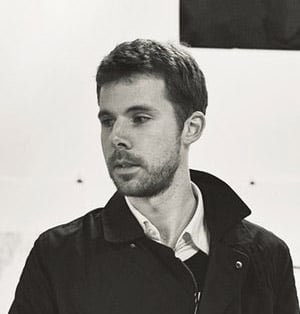
Jonathan Monaghan
Artist
Jonathan Monaghan (b. 1986, New York) works across a range of media, including prints, sculpture and animated video, to produce otherworldly objects and narratives. Drawing on wide-ranging sources, such as historical artworks and science fiction, his works elicit subconscious anxieties associated with technology and consumerism. Past exhibitions and screenings of his work include The Sundance Film Festival, The Walters Museum of Art, and The Frist Center for the Visual Arts, and the Palais de Tokyo. His work has been featured in several media outlets including The Washington Post, VICE, The Wall Street Journal and The Village Voice.
Claudia Hart
The Process Of History
4K/3D animation, 9 minutes, looped For monitor or Projection Available in hiDef and 4K. The structure of this work is framed by 3 virtual cameras, each “take” 3 minutes in length, edited using the fibonacci series beginning with a single frame and increasing algorithmically throughout. This rendered animation uses the same environment built for “After the Party,” a virtual-reality world for Oculus Rift, premiering in 2015 for the first edition of DiModa, the Digital Museum of Digital Art. The work inspired by Verner Panton (1926-1998), the pop furniture designer from Denmark, known for his optical interiors and pioneering work with injection molded plastics. His design strategy originally emerged from the Danish Modern, known for bent, biomorphic wood and muted tones. Panton broke with this esthetic, developing instead fantastical, vibrant interiors he described as psychedelic landscapes. A synthetic interior in which monumental sculptures of flowers are surfaced with Panton-inspired patterns, this world is was my version of Panton’s kind of optimistic sixties Op Art. It is an architecture that grows and randomly decays, cycling endlessly. Defined by several of Panton’s lighting fixtures used to cover walls and ceilings, I tried to create an esthetic of fakeness where technology has replaced nature, both sugary sweet and chemically toxic in equal measures. The audio track is by Alain Thibault, composer and curator of the Elektra Festival, Montreal.
Claudia Hart
Swing
The Swing features a plump nude avatar, named Machina, whose appearance is loosely based on Baroque painter Peter Paul Reuben’s portraits of his wife, and personifies Rococo fleshy decadence. In this multi-channel animated installation, the character swings on a seat suspended from the sky, set inside super Mannerist slow time. Her wooded surroundings ebb and flow at another rate, imitating stop motion, as years pass in a matter of moments. The driver of all of these cycles, but a driver scarcely in control, this female figure is a Mother Nature heading straight for what she suspects might be Oblivion.
Claudia Hart
Seasons
The Seasons, 2008 11-minute 3D Animation, Looped 4K Pro Res Lite.
The Seasons portrays a room in which a slowly evolving sculptural figure gradually transforms. In this animated loop, a variety of visual, temporal and conceptual cycles are offset and overlaid so that their movement is obscured. All is in flux but time seems to stand still, as in life. In The Seasons, a seated woman in a pose of erotic abandon cycles clockwise on a rotating pedestal. As she cycles, she decomposes, a vine of roses surrounding her, blooming and then fading away. The room also revolves, though counter clockwise, while the animation camera pans back and forth. These movements function in counterpoint, to appear only on the edge of perception. Sound for the piece is of crumbling paper. The color scheme is white on white.
Claudia Hart
Ophelia
“Ophelia”, 2008 single-channel animation 10 minute 3D animated loop, available as high-definition video-object or large-scale projected installation Ophelia is a 3D animation in which the exposed body of a naked woman drifts at the bottom of the ocean. Hamlet’s lover, Ophelia is a feminist figure embodying the Electra complex, a mad woman who drowned herself for love of a man who murdered her father. But there is another tragedy embodied here, a collision between the technological and the natural worlds. This Ophelia floats at the bottom of a sea littered with refuse and plastic bags, making her an ode to loss: not just of youth and love but also of our own natural world and the possibility of living harmoniously within it. Sound for the piece is a woman’s laughter.
Claudia Hart
DigitalDeath
Digital Death, 2013, 20 minutes, looping High definition 1920 x 1080 p 3D animation Installation life-sized projection or framed monitor.
Digital life is ultimately flawed and fleeting, even more so than biological life. From the moment of creation, digital life is marked by myriad glitches and a rapid descent into obsolescence. Hence digital life is no more than a mere illusion for a more base reality, that which is Digital Death. This work was created by embracing ideas that seem to be contradictory by simultaneously using two sets of paired software tools, on two separate pieces of software that are oppose one another. The first set employs a biological growth algorithm. What I did was to both “grow” and “ungrow” a cherry tree simulation at the same time. The second set regards the passage of time. I both added and removed time simultaneously, using editing software. By using tools that exist in paradoxical relation to one another, I created a Taoist tree that eats itself even as it is being born, endlessly cycling – in a state of Digital Death. The piece was first shown in a two-person exhibition entitled Rendering Time, with the artist and my former student, Alex M. Lee at Gallery Dos in Seoul, Korea. A catalog written by Nicholas O’Brien discusses our work in the context of contemporary media, representation and proposes that digital structures necessitate a contemporary version of the historical concept of the Sublime. Download: https://files.cargocollective.com/7657
Claudia Hart
Inside the Flower Matrix
11-minute, installation re-purposing the Flower Matrix VR environment. By Claudia Hart, with music composed by Edmund Campion, cello improvisations by Danielle DeGruttola, vocals by Claudia Hart and Mikey McParlane. Special thanks to Jennifer Muraoka. Meant to be exhibited offset in multiple channels. Available as 1080 p and 4K Inside the Flower Matrix is a new work that is a part of Claudia Hart’s Alice world, reinterpreting the Lewis Carroll paradigm as a labyrinth. Inside the Flower Matrix envisions Wonderland as the Interweb, covered by flashing emoji, the icons for power, money, addiction and control. Hart’s Internet is commercial stripway, the enactment of Casino Capitalism but at the same time, paradoxically, also a metaphor for a model of the mind and a site of transformation. The Flower Matrix is specifically modeled after the ancient Roman mythological labyrinth of the Minotaur, an endless maze from which there is no escape. Hart has created a game world covered with pulsing graphical patterns made from emoji, and also from symbolic computer language and public signage icons, conjoined in animated patterns that throb and pulse hypnotically. Also inside the Flower Matrix are five original species of fantastical flowers designed by Hart and covered with the same pulsing patterns, randomly growing and decaying. This is an environment portraying an esthetic of fakeness where technology has replaced nature, both sugary sweet and chemically toxic in equal measures.
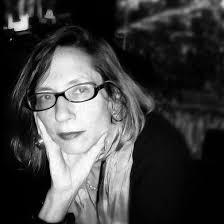
Claudia Hart
Artist
Claudia Hart emerged as part of a generation of 90s intermedia artists in the “identity art” niche. She still examines issues of identity, now focusing on how technology has effecting cultural constructions of gender identities and issues of the body, perception, and nature collapsing into technology and then back again. Hart was an early adopter of virtual imaging, using 3D animation to make media installations and projections, then later as they were invented, other forms of VR, AR, and objects using computer-driven production machines, all based on the same computer models. At the School of the Art Institute of Chicago, she developed a pedagogic program based on this concept – Experimental 3D – the first art-school curriculum dedicated solely to teaching simulations technologies in an art-world context. She lives in New York and Chicago, works with Transfer gallery and bitforms galleries, and is married to the Austrian media artist Kurt Hentschlager.
Sara Ludy
Rooms
Rooms is a spatial exploration of a house model downloaded from the Google Sketchup 3D Warehouse. The video shows familiar elements of an architecture twisting and abstracting into a disorienting experience.
Sara Ludy
Transom
From the series “Space Portraits”. Transom is a space portrait of Market Station in Leesburg, VA. Historic buildings were uprooted and relocated to form this commercial complex in the 1980’s. While wandering through various architectures, Ludy photographs her journey while focusing on elements that resonate a sense of place. These photographs are later composed into an animated slideshow of transitions, evoking the liminal space between time, memory, and place.
Sara Ludy
Thuja
Thuja is a compositional video work including a selection of found photos from Northern Virginia real estate listings. The video takes form as a slow moving panorama composed of condominium interiors and undeveloped land lots.
Sara Ludy
Fire Mountain
Fire Mountain is a digital animation from Ludy’s ongoing series, Clouds (2011 – present). This series employs computer imaging programs to generate animated paintings. Dozens of painterly compositions are layered to create tangible textures, referencing the desire for virtuality to manifest physically.
Sara Ludy
Fire Pond
Fire Pond is from the ongoing series “Clouds” (2011 – present). This series employs computer imaging programs to generate animated paintings. Fire Pond is composed with multiple layers of animation, simulating atmospheric clouds reminiscent of the sublime found in Romantic painting.
Sara Ludy
Sky Lapis
Sky Lapis is a digital animation from the ongoing series Clouds (2011 – present) by Sara Ludy. This series employs computer imaging programs to generate animated paintings. Through glassy textures and interwoven forms, Sky Lapis evokes the amorphous landscapes found in Ludy’s oneiric VR environments.
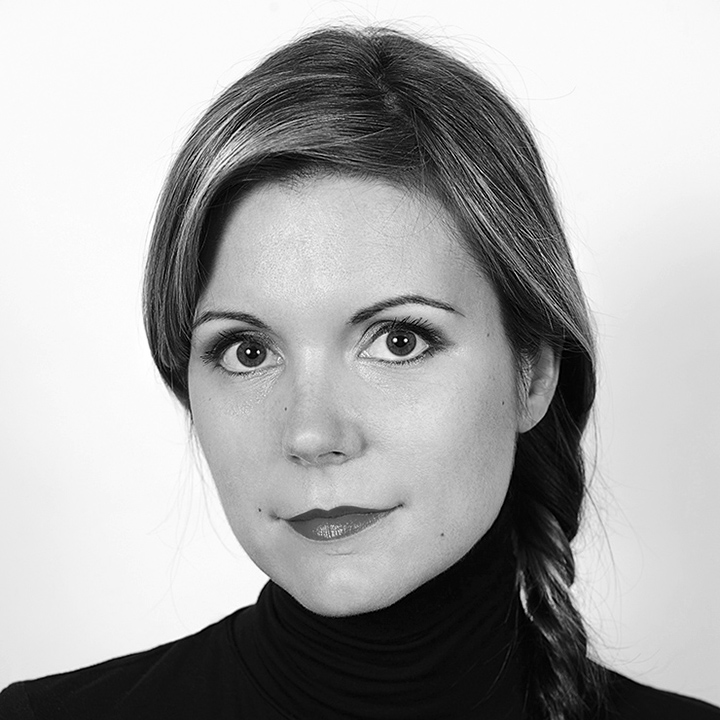
Sara Ludy
Artist
Sara Ludy is an American artist working in a wide range of media including video, sound, animation, virtual reality, websites, audiovisual performance, sculpture, photography, painting, and installation. Through a prolific practice, Ludy creates hybrid forms that emerge from the confluence of the physical and virtual.
Marina Zurkow
The Thirsty Bird
The movement of a pump jack (known colloquially as a “thirsty bird”), and a public water fountain are synchronized in a delicate dance. As the pump pulls oil upward, the water fountain spurts water. An array of archetypal individuals—cowboys and Indians, a father and his son, a county sheriff, a cow, a soldier, a girl with her dog—emerge in endless succession to drink from the fountain. The graphic treatment is based on Gerd Arntz’ ISOTYPE (International System Of Typographic Picture Education), developed with Viennese social scientist and philosopher Otto Neurath (1882-1945) as a method for visual statistics.
Marina Zurkow
Slurb
The animated, carnivalesque tailgate party of Slurb loops and stutters like a vinyl record stuck in a groove. Slurb, a word that collapses slum and suburb encapsulates a dreamy ode to the rise of slime, a watery future in which jellyfish have dominion. There is a history of satirical illustration, epitomized by J.J.Grandville in the 19th century, in which animal-headed humans are deployed in the telling of troubling social narratives. Slurb is that kind of cartoon. Facts of the oceans radical changes in acidity and oxygen levels form the backbone of the animation; overfishing, dumping, and climate changes heating of ocean currents have already triggered a reversion toward a primordial sea in parts of the ocean larger than the state of Texas. Slurbs surface is inspired by fictions, like J.G. Ballards prescient 1962 novel Drowned World, in which inhabitants of a flooded world feel the tug of the sun, and dream of a return to their amniotic past.
Marina Zurkow
Elixir II
The “Elixir” pieces describe impossible landscapes: cut-crystal bottles bob and toss like buoys in the ocean, beacons bearing potions, poisons, messages, genies. Each bottle contains an animated figure engaged in a repeated, metronomic action. In “Elixir I”, a woman is rowing; “Elixir II”, a blindfolded man stumbles to stay upright. “Elixir III” holds a little girl trying to fly with paper wings; and in “Elixir IV”, a high diver twists and arcs, while the bottle presses forward in an Antarctic landscape. The highly layered video treatment pays tribute to the 19th century Russian painter Ivan Aivazovsky, whose portentous, luminous paintings of tiny ships on huge swells of ocean both mesmerize and terrify the viewer.
Marina Zurkow
Elixir I
The “Elixir” pieces describe impossible landscapes: cut-crystal bottles bob and toss like buoys in the ocean, beacons bearing potions, poisons, messages, genies. Each bottle contains an animated figure engaged in a repeated, metronomic action. In “Elixir I”, a woman is rowing; “Elixir II”, a blindfolded man stumbles to stay upright. “Elixir III” holds a little girl trying to fly with paper wings; and in “Elixir IV”, a high diver twists and arcs, while the bottle presses forward in an Antarctic landscape. The highly layered video treatment pays tribute to the 19th century Russian painter Ivan Aivazovsky, whose portentous, luminous paintings of tiny ships on huge swells of ocean both mesmerize and terrify the viewer.
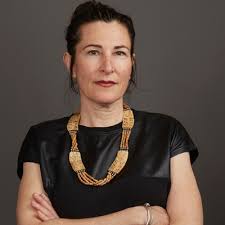
Marina Zurkow
Artist
b. 1962, New York
Lives and works in New York
Marina Zurkow is a media artist focused on near-impossible nature and culture intersections. She uses life science, materials, and technologies – including food, software, animation, clay and other biomaterials – to foster intimate connections between people and non-human agents.
Quayola
Strata #4
Strata #4, 2011 HD video, stereo sound 10:09 loop Edition of 6
Strata #4 was originally commissioned as a multi-channel immersive video-installation for the Palais de Beaux Arts in Lille, France, where it debuted in October 2011. The subjects of this work are four grand altarpieces by Anton Van Dyke and Peter Paul Ruebens in the museum’s Flemish collection: Van Dyck’s Christ on the Cross (1628) and Rubens’ Martyrdom of St. Catherine (1615), The Ecstasy of Mary Magdalene (1619) and The Descent from the Cross (1617). “Strata #4 is a study of the relationship between classical figuration and abstraction,” says Quayola. “It is based on universal rules of beauty and perfection. The movement on-screen creates a dialog between two eras, two dimensions.”
Quayola
Strata #3
The term “strata” refers to a geological formation constructed of multiple layers of rock, where each layer is differentiated from the next through its characteristics: porosity, texture, color, and composition. It defines a manner of identifying breaks within organic evolution, a visual metaphor for a history composed not as a linear process but one of accumulation of signifiers over time. It is in this vein that the “Strata” series explores the construction and deconstruction of our perception of classical art, architecture and iconography. Operating within the landscape of classical aesthetics–the perfection found in the figuration of the Renaissance, the opulence of the Baroque, or the rigour and integrity of Gothic architecture –“Strata” delves under the surface of the image, deconstructing it, reducing it to it’s essential coordinates, colors, geometries, and strips it of its symbolic function. A living abstract landscape emerges, complete with topographic maps, linear pathways and structures which pulsate, diverge from the origin, scatter, and hang suspended.
Quayola
Strata #2
In Strata #2 Quayola creates an imaginary geology, in which he fragments the window of a gothic Cathedral, layer by layer, into individual picture sections. Strata #2 is the second part of an ongoing project and was originally conceived as a site-specific installation focusing on Parisian Gothic Art and Architecture (in Notre Dame and St. Eustache for Nemo Festival, Paris, 2012.)
Quayola
Jardins d’Été #1
Jardins d’Été by Quayola pays homage to the tradition of french impressionism and the late works of Claude Monet.The second iteration of this series of artworks investigates the ways in which nature is observed, studied and synthesized, becoming a point of departure towards abstraction. Quayola recreated similar conditions to the classical impressionist landscape paintings, however he engaged with an extensive technological apparatus to capture the sensitive nuances of reality beyond our senses. Here natural landscapes are observed and analysed through the eye of the machine, and re-purposed through new modes of visual synthesis. Jardins d’Été consists of a series of 4K resolution digital video paintings inspired by the gardens of Chateau de Chaumont-sur-Loire. A wide range of floral compositions manipulated by high winds are filmed at night in ultra-high definition. Quayola edits the acquired videos with complex computational analysis of motion, composition and colour schemes which become the foundation for the creation of new algorithmic paintings.
Quayola
Jardins d’Été #2
Jardins d’Été by Quayola pays homage to the tradition of french impressionism and the late works of Claude Monet.The second iteration of this series of artworks investigates the ways in which nature is observed, studied and synthesized, becoming a point of departure towards abstraction. Quayola recreated similar conditions to the classical impressionist landscape paintings, however he engaged with an extensive technological apparatus to capture the sensitive nuances of reality beyond our senses. Here natural landscapes are observed and analysed through the eye of the machine, and re-purposed through new modes of visual synthesis. Jardins d’Été consists of a series of 4K resolution digital video paintings inspired by the gardens of Chateau de Chaumont-sur-Loire. A wide range of floral compositions manipulated by high winds are filmed at night in ultra-high definition. Quayola edits the acquired videos with complex computational analysis of motion, composition and colour schemes which become the foundation for the creation of new algorithmic paintings.
Quayola
Topologies Tiepolo
Produced in high definition for a commission by the British Film Institute and onedotzero, this piece premiered in 2010 at the BFI Gallery, London. Originally produced as a two-channel animated video installation, the work also exists as a single-channel piece. Interrupting our expectations of space, the Topologies video installation re-imagines the calculations that go into crafting a masterpiece. In this work, the painted surfaces of two pieces from the Museo del Prado collection, Las Meninas (1656) by Velázquez and The Immaculate Conception (1767) by Tiepolo, transform into animated movement. Dislocating the viewer in time, this work boldly challenges, yet still submits to, the art object’s myth of perfection and aura, hanging in a church or museum. Transporting this beauty into a virtual realm, Quayola rigorously investigates the surface details of each object. Pure geometry and abstraction take over, as he reframes his subjects using a computational method of triangulation. Hundreds of thousands of polygons and points comprise a wire frame core that mathematically contorts and regenerates, driven by a soundscape that visually is determined.
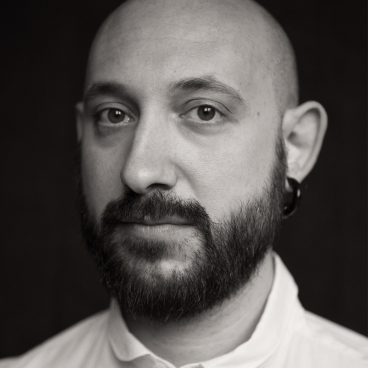
Quayola
Artist
Quayola employs technology as a lens to explore the tensions and equilibriums between seemingly opposing forces: the real and artificial, figurative and abstract, old and new. Constructing immersive installations, often at historically significant architectural sites, he engages with and reimagines canonical imagery through contemporary technology. Hellenistic sculpture, Old Master painting, and Baroque architecture are some of the historical aesthetics that serve as a point of departure for Quayola’s abstract compositions. His varied practice, all deriving from custom computer software, also includes audiovisual performance, video, sculpture, and works on paper.